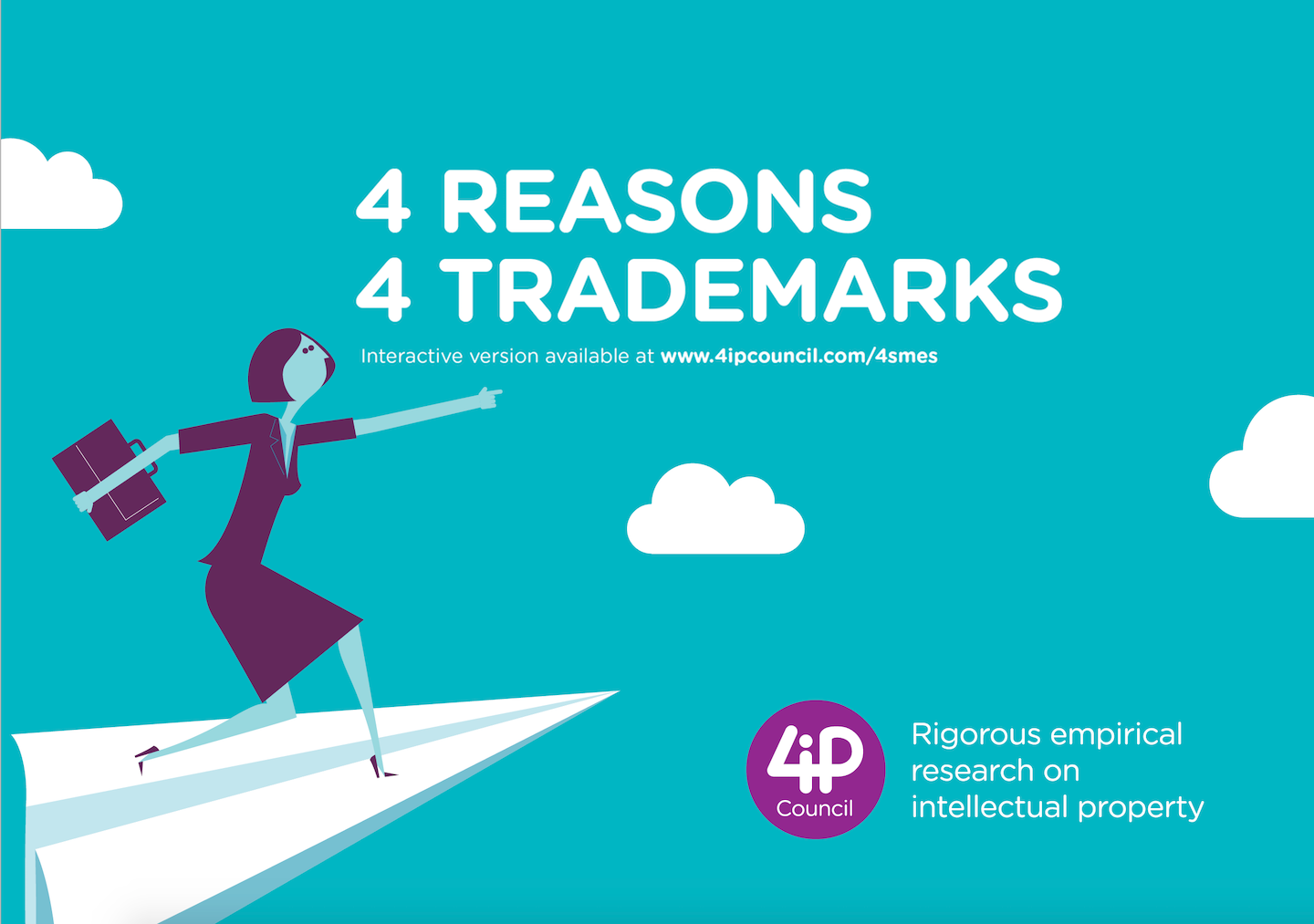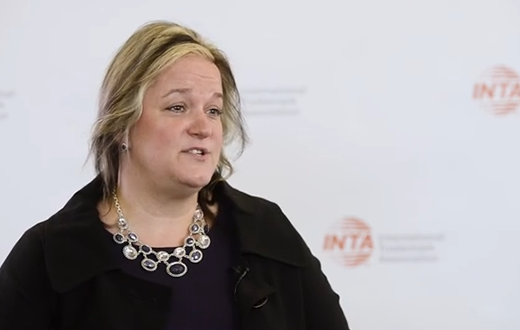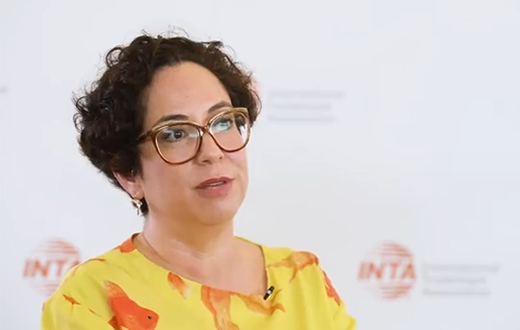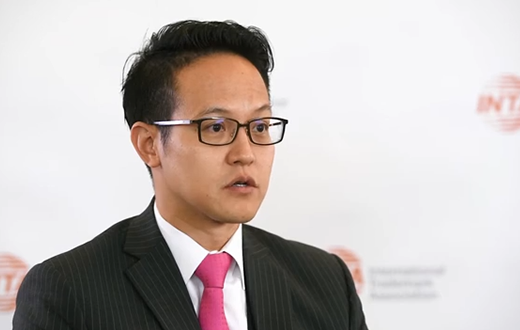Resources
For SMEs
Your product/service is your business. Your brand is your image. IP protects both. Don’t skIP it!

Are You an SME or an Entrepreneur?
What’s an SME/entrepreneur?
Regardless of the exact terminology or definitions, small- and medium-sized enterprises (SMEs) and entrepreneurs play a crucial role in the global economy.
The terms used to describe these businesses can vary, and might also include small and medium businesses, micro-businesses, and more. The attributes that qualify a business as being an SME also vary significantly across the globe, but the standards are typically based on revenue size and/or number of employees.
As you set up a business, you may first focus on finance (venture capital and other sources of funding, taxation, accounting, etc.) and/or the practical resources you may need (housing, human resources, etc.).
But what about intellectual property (IP) rights? Do you know why they matter to your business? Do you know why they should be tackled at the early stages?
IP protection is often overlooked during the early stages of small business creation and growth. But it shouldn’t be.
Any successful business needs a window to the outside world to make its products or services known, to promote them, and ultimately to sell them. Think of your brand as your window to this outside world—it’s your image. For your business to thrive and grow, you’ll want to protect that image.
There are various types of IP that comprise a brand—with trademarks being the focus here. A trademark is a specific aspect of your brand. It’s a word, phrase, acronym, graphical element, logo—and in some cases even a color (or combination of colors), sound, smell, shape, movement, or other type of sign or symbol—that customers learn to associate with your products and services. Over time, when your customers see your trademark, they learn to associate aspects of your products and services with it, including quality and reputation. It’s also the legal right to your brand.
- Trademarks help your customers distinguish your products and services from your competitors.
- Trademarks help you to build a customer base and customer loyalty.
- Trademarks ensure that competitors don’t steal, damage, or unfairly profit from your brand.
Trademarks can generate revenue for your business in many ways, including through licensing agreements. With all the time, money, and energy you spend developing your brand, you should think about protecting it through trademark registration. Here’s why:
- Registration strengthens your reputation in the market by showing care and business readiness, and that you are thinking long-term and strategically for your brand.
- Registration puts competitors and the consumer marketplace on notice of your brand rights and warns them they cannot copy or steal it.
- Registration allows you to keep competitors from trading on your name for your products or services (or those that are confusingly similar).
- Registration prevents others from applying to register the same or a confusingly similar mark, possibly avoiding costly litigation or negotiations to re-acquire your rights.
- Registration allows you to fight counterfeits that are trading under your brand name as well as unauthorized product sales in online marketplaces.
- Registration gives you the presumption that you are the owner of your trademark when there is a dispute, and it’s up to the other party to challenge the validity of your rights.
- Trademark registrations are an important consideration during the valuation of a company and its assets.
- Failure to register may cause investor concern.
- Monetizing your trademark through licensing, collaborative ventures, asset sales, or other business deals usually requires registration to ensure clear title and ownership to your trademark.
- Registration can help your business to expand to potential new goods and services as your business grows.
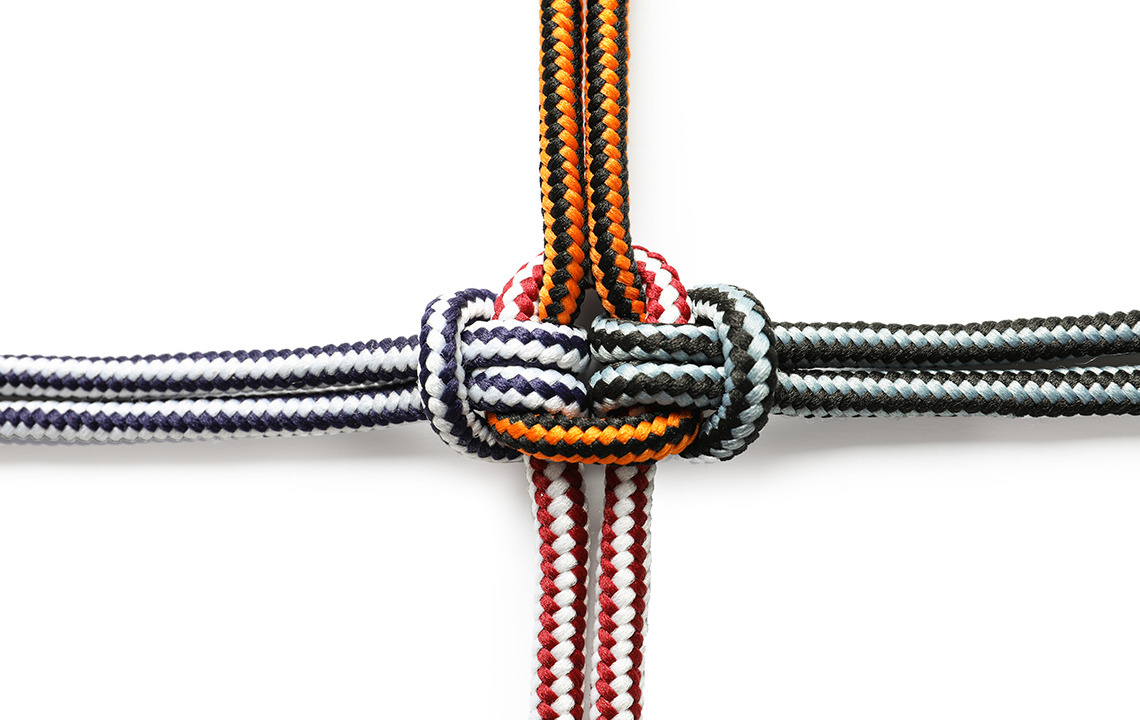
Need Help With Trademark Protection?
The Pro Bono Clearinghouse can help. It’s free of charge. If you qualify, you’ll be put in contact with an IP professional who can assist with your trademark issues.
The Clearinghouse serves low-income individuals, small- to medium-enterprises, and not-for-profit, and nonprofit or charitable organizations with low operating budgets that might not otherwise have affordable access to legal assistance.
Please note that any content repurposed from our Fact Sheets must include the following copyright notice: © International Trademark Association (INTA). Reprinted with kind permission.
Counterfeiting (Intended for a non-legal audience)
Where should I protect my trademarks?
By Scott Rogers (Ulmer & Berne LLP, USA) and Michael Best (Best Rechtsanwälte, Germany)
In all but the rarest cases, it makes no sense to register your trademarks in as many countries as possible or even on a “worldwide” basis.
As a rule, there are two places to start. Protect and register your trademarks (1) in countries where you are currently selling your goods or services; and (2) in countries where you may realistically sell your goods or services within the next three to five years.
In addition, it may make sense to protect and register your trademarks in countries where the goods using your trademarks are manufactured, even if those goods are not sold there. Doing so may block a third party from registering your trademarks, which is important because such a registration could prevent you from exporting your goods.
Should it later turn out that you will use your trademarks elsewhere, you should take immediate steps to protect and register your trademarks in those countries too.
Since my business is predominantly online, where should I protect my trademarks?
If you are selling goods online globally, deciding where to register your marks can be more complicated. In such cases, consider registering your marks in the following places:
- The countries where you have the highest volume of sales;
- The countries where you can obtain rights in your trademark through use alone;
- The countries where the risk of trademark squatters, knockoffs, and counterfeit goods is higher;
- The countries where you would suffer significant damage if a third party has already registered the same or a confusingly similar trademark.
What are the costs to register a trademark?
By AnneMarie Sheridan (Conair Corporation USA), and Jeff Lindenbaum (Rothwell Figg, USA)
There are three general categories of costs that you may incur when seeking to register a trademark: (1) pre-application costs; (2) application and other pre-registration costs; and (3) post-registration costs.
Pre-Application Costs
Before you apply to register a trademark, it can be valuable to conduct a search to make sure the name or tagline of the mark is not already registered or being used by another company. This could save you time, money, and a future conflict.
In many countries, you can conduct a free search on the website of the national trademark office. Costs can vary from country to country. In the United States, for example, a preliminary search on the United States Patent and Trademark Office (USPTO) website can cost as little as US $200–300, and a full search can be US $1,500–2,000 or more.
Application and Pre-Registration Costs
There are two different types of application costs: (1) mandatory trademark office fees; and (2) attorney fees.
Procedures and requirements vary from country to country, and most trademark offices categorize goods and services into classes. Again, using the United States as an example, the USPTO fees for filing an application are either $250 or $350, depending on the type of application filed. This covers one class of goods or services. So, for example, T-shirts and hats are in one class, but you will need to file two applications in two classes if you want to protect the mark for T-shirts and backpacks. If you file for more than one class, you typically must pay additional fees for each additional class.
Post-Registration Fees
In most countries, a registration does not last forever and must be renewed after a certain number of years, normally seven or ten years.
In the United States, after the mark is registered, it must be renewed before the six-year anniversary at a cost of US $225 per class, and then at every ten-year anniversary at US $300 per class.
Attorney Fees
It is often advisable to hire an experienced trademark attorney to clear, prepare andfile, your application. Many attorneys will do this work for a flat fee, while others will charge an hourly rate. Again, fees will vary depending upon the country. In total, you should be prepared to spend about US $1,000 in attorney fees for each application.
Do I need to use TM or ® in connection with my trademark?
TM stands for trademark. The TM symbol (often seen in superscript like this: TM) is usually used in connection with an unregistered mark—a term, slogan, logo, or other indicator—to provide notice to potential infringers that common law rights in the mark are claimed.
Although there is no legal requirement to use the “TM” symbol, such use provides notice to the public that you are claiming ownership and common law rights in a mark, assuming that you are using it in a jurisdiction that recognizes first-to-use trademark rights (other jurisdictions require you to register your mark to obtain rights in that mark). Using the “TM” symbol with your mark can also help establish your brand by promoting brand recognition. While a “TM” claim does not provide the same legal protection as a trademark registration, it is a useful tool for businesses looking to establish brand identity and discourage others from using their marks.
The symbol ® is a notice of registered trademark ownership. It is used to advise the public that a trademark or service mark is registered, providing notice of the legal ownership status of the mark with which it is used. The ® symbol should be used only in connection with registered trademarks.
While in most jurisdictions marking is not mandatory, use of the “®” symbol or similar notices like “Registered” or “Marca Registrada” provides notice to the public that your trademark is registered. The symbol may act as a deterrent to others who might otherwise use the same trademark or a similar one in the same industry as your mark. Additionally, using the “®” symbol can enhance the value and reputation of your brand because it shows you have invested time and money in protecting and promoting your trademark.
In most jurisdictions, the ® may be used only after registration of the mark is granted. Also, in most jurisdictions, use of ® with an unregistered mark is a civil or criminal offense. As such, if you export your products—bearing the ®—to a number of jurisdictions, it is important to make clear where the trademark is registered.
I received an urgent-looking invoice from a “Trademark Service” that says my registration is about to expire. Should I pay it?
By Kellie Jukkola (Michael Buck IP, Australia) and Marc Fineman (Levenfeld Pearlstein, LLC, USA)
There are companies that access publicly available information to obtain fees from unsuspecting trademark owners. You may receive invoices and other “official-looking” correspondence sent to you by agencies that are not authorized to act on your behalf.
Be wary of any invoice that demands payment of heavily inflated or surprisingly low fees for a trademark maintenance filing, or that suggests you can protect your trademark via placement on an international trademark register.
Before paying any invoices, check the following:
- Is the invoice from a trusted attorney or the official intellectual property office in the relevant country?
- What is the actual cost of renewal? Be sure that any service charge above the official renewal fee offers you value for your money.
- Is the company that sent the invoice known to send phishing invoices? Examples of phishing invoices and scams can be found here and here.
Why do I need a trademark registration?
Trademark registrations are very powerful. A trademark registration protects your right to use your company’s or product’s mark in a particular jurisdiction. In some jurisdictions, a trademark registration is required to protect your trademark. In these jurisdictions, if someone else registers your mark, you may be barred from using it even if you used it first. If you plan to do business in a country that requires registration to protect your mark, you should talk with a trademark attorney about registering for a trademark before you start doing business in that country.
Even in countries that do not require registration for ownership in a mark, trademark registration can help you protect your mark and reputation. A registration makes it easier to prove your ownership in your mark in court, better positions you to enforce your rights online (such as on social media and ecommerce sites);, allows you to ask Customs to help prevent counterfeiters from importing goods with your mark , and may help you attract investors or franchisees. Registered marks are also recorded in searchable databases by the government so people can search to see if a mark name is taken; registering your mark helps prevent others from accidentally choosing to use the same mark as you.
Can I register my trademark worldwide?
There is no such thing as a single trademark registration worldwide, but you can register trademarks in most jurisdictions. Because the costs of registering throughout the entire world will be substantial, it is best to seek protection in those jurisdictions where you are likely to use your mark in the foreseeable future.
We use the term “jurisdiction” here rather than “country” because there are some exceptions to the general rule that registration must be sought on a country-by-country basis. For example, a European Union Trade Mark (EUTM) registration covers the whole EU; a BENELUX trademark registration covers Belgium, Luxembourg, and the Netherlands; and the African Regional Intellectual Property Organization (ARIPO) and the African Intellectual Property Organization (OAPI) both allow for the filing of a single trademark application, the registration of which will be recognized by all African countries that are members of the respective organization.
The Madrid System (which is administered by the World Intellectual Property Organization) allows applicants to seek trademark protection in many jurisdictions at once via a single International application, which will then be evaluated separately according to the standards in each designated jurisdiction.
This is a complex area and any SME seeking to register trademarks in multiple jurisdictions will benefit from working with a trademark practitioner.
Do I need to clear my trademark before launching it? How do I do that?
In most jurisdictions you are not required to conduct a trademark clearance search before filing a trademark application, but it is strongly recommended.
The reason to conduct a trademark clearance search is to identify any identical or similar marks that cover similar or related goods on the relevant trademark register—as well as identifying any relevant unregistered marks by searching on web browsers and business registries. While a search can never be entirely comprehensive, it will help guide you as to whether use and registration of your mark may be blocked by conflicting third-party registered or pending trademarks or even inactive trademarks that have lingering user rights. Rights in these earlier marks are referred to as “prior rights.”
Can I conduct my own trademark clearance search?
It is possible to use online tools and databases to search for trademarks in jurisdictions where you plan to do business. However, not finding an identical trademark does not mean that your selected trademark is available or that adopting it is otherwise prudent. And conversely, finding an identical mark does not mean your selected trademark is not available, as it may be distinguished by covering dissimilar goods or services.
The results of a trademark clearance search will always benefit from analysis by a trademark practitioner who can help you to understand the meaning of the search results and help you make a risk assessment about the mark you are choosing.
Why should I conduct a trademark clearance search if it’s not mandatory?
A trademark clearance search is relatively inexpensive when compared to the cost of having to rebrand a product that has already been marketed in conjunction with a trademark in which another party claims rights. Similarly, the cost of defending your trademark in an infringement action by the owner of a previously registered or used trademark is significantly higher than conducting a trademark clearance search in the first place, as are the potential damages that you may be required to pay if you are found to be infringing. When it comes to trademark clearance searching, an ounce of prevention is definitely worth more than a pound of cure.
I registered a domain name/company name and received a cease and desist letter alleging trademark infringement—can this be possible?
Even though I registered my domain name/company name, I received a cease and desist letter alleging infringement of someone else’s trademark. Doesn’t my registration give me permission to use the domain name/company name?
A domain name registration reserves an address for a website and a company name registration identifies the business to the government for regulatory and tax purposes. Neither type of registration confers rights to use the name in connection with goods and services to serve as a source identifier to consumers like a trademark registration does. Because these respective registrations serve different purposes, a domain name or company registration does not grant trademark rights to that name or prevent others from using it.
As such, even if you have registered a domain name or a company name, you may still infringe a third party’s trademark registration. If you receive a cease and desist letter, contact a trademark specialist in your country to help determine whether your name is in fact infringing and/or whether it may be possible to continue your use. Additionally, in the future, it is prudent to conduct a trademark search before choosing and using a domain name or company name and to consider registering that name as a trademark. A trademark specialist in your jurisdiction will also be able to advise and assist with this process.
My overseas distributor/franchisee has applied to register our trademark for us—this should not be a problem, should it?
If a distributor/franchisee (or any other party) registers your trademark in another jurisdiction that can be very problematic because it confers exclusive rights of ownership and enforcement in that jurisdiction on that party, and not on you. Based on that registration, the distributor/franchisee may exclude you from using the trademark in the relevant jurisdiction, place restrictions on your use of the mark in that jurisdiction (for example, you might be restricted to using it only in cooperation with that party), or block your own subsequent applications for your mark in that jurisdiction. Because cancelling or opposing a trademark filing by a third party may be costly, time consuming, and even unsuccessful, it is best to register important trademarks prior to expanding to a new country and to include express provisions in partner agreements confirming your ownership of trademarks and prohibiting registration by third parties. If a distributor/franchisee has filed an application to register your mark, consult a trademark specialist.
I have come up with new names and trademarks for my two new businesses: HARRY POTTER’S MAGIC CLAIMING SERVICES and AMAZON COURIER AND DELIVERIES—can I use these names/trademarks?
Generally, the use of names/trademarks that are similar or identical to an older trademark currently used in the same market segment as your own is prohibited. Furthermore, famous trademarks are usually awarded a higher level of protection, which means that the use of similar or identical names is prohibited not only in the same market segment where the famous brand operates but in any other segment of the market in general.
This is because the reputation of the brand may easily cause the public to believe that the products or services offered under an identical or similar name are in some way related to the famous brand. Additionally, it would be unfair for another business to benefit from the market power of a famous and well-established trademark.
For these reasons, the business names HARRY POTTER’S MAGIC CLAIMING SERVICES and AMAZON COURIER AND DELIVERIES are most likely not acceptable business names/trademarks, because they are very similar to the trademarks HARRY POTTER and AMAZON, which, being worldwide famous trademarks, would likely be protected in every market segment. Therefore, even if your products and services are not identical or similar to the ones provided under the trademark AMAZON or HARRY POTTER, it would be very difficult to register the names as trademarks and you would likely incur liability for trademark infringement.
If you wish to use a name/trademark that resembles a famous trademark or a trademark that you think may be famous, you should seek the advice of a trademark practitioner who can conduct a background search.
Can I use the name of a well-known celebrity to help market my products?
The use of the name of a real or fictional celebrity may trigger liability. Most jurisdictions prohibit the unauthorized use of names and images of celebrities, even if they have passed away. In many jurisdictions, similar protection is generally awarded under copyright laws to the images of fictional characters.
In many jurisdictions, the unauthorized use of a name or image in a way that is either degrading or prejudicial to the person’s reputation is prohibited (with few exceptions, for example, satire or parody).
Further, the celebrity (or the owner of the rights over the name and image of the fictional character) may be able to claim damages if the unauthorized use creates the risk that the public could assume a business relationship between the celebrity and the products. For example, a company may be liable for naming a line of make-up products after a famous make-up artist without the artist’s consent, since the use of the name could reasonably create the impression that the artist is involved in the production.
In some countries, such unauthorized use could also constitute unfair competition since the infringer would unfairly benefit from the reputation of the name and could result in fines and other punitive measures.
Finally, in some cases, the use of the name of a celebrity might even trigger criminal liability.
Therefore, if you use or wish to use the name of a celebrity, public figure, or fictional character, you should seek advice from a trademark practitioner to help clarify your options, if any, for moving forward.
I have slightly changed the form of my trademark from the form in which it was registered. Can I still rely on my registered trademark for protection?
In principle, a registered trademark provides protection only for the form of the mark as registered. In many countries, a trademark registration can be attacked if the mark has not been used for a number of years (usually three to five years). As such, if you do not use your mark as registered, the trademark registration ultimately could be attacked.
Since fashions and styles change over time, many trademark offices do, however, allow a slight modification/modernization of the form of the mark. The law varies from jurisdiction to jurisdiction, but, in general terms, if the relevant public, to which the mark is directed, would consider the changed mark and the mark as registered to be one and the same sign, it is likely that you should still be able to rely on your registration to protect the slightly changed mark. If the public would not consider the changed mark and your registered mark as the same sign, you should probably register the changed mark as well. However, since the law varies between jurisdictions, you should check with a local trademark practitioner in the jurisdictions where your mark is registered if you want to change it.
My company’s name/address has changed since I registered my trademark. Do I need to update the registration?
The best practice is to update trademark registrations with the new name and address as soon as commercially practicable. In many jurisdictions, renewals, declarations of use, and other important actions must be filed in the actual name of the owner and under the correct address.
Otherwise, in the event of a trademark dispute, names/addresses may need to be corrected with additional and costly new filings and under time pressure. Additionally, it may become difficult to prove use of the trademark as required for maintenance of a registration or in an adversarial proceeding where the owner’s name on the register does not match the name of the person actually using the mark.
That said, a trademark owner generally does not lose rights in a trademark registration if a change in the owner’s name or address is not immediately recorded. Indeed, in cases where several registrations across jurisdictions are involved, it may not be cost-effective to proactively update all registrations, and an owner may decide to make updates as marks are renewed or other issues arise.
I have not applied to register my trademark. Can I use it anyway?
Although use can confer trademark rights in some jurisdictions, most jurisdictions grant trademark rights to the first party to file an application for a given trademark on the jurisdiction’s registry. If you don’t file a registration for your mark, others have the opportunity to file first, potentially preventing your own registration and compromising your freedom to use the mark and potentially even to operate your business.
Having a registered trademark is also critical to being able to enforce your rights as the trademark owner, because in most jurisdictions the registration confers a presumption of ownership and the exclusive right to use the mark in the jurisdiction of registration. Many legal claims and online platforms require a registration to enforce rights in a mark.
I have a trademark registration in my home jurisdiction and I have learned that third parties are using the identical trademark in another jurisdiction for the same goods that I sell. Can I stop this?
Generally, you need to have trademark registration in a particular jurisdiction to stop someone else from using or registering your trademark there. In some jurisdictions, you may be able to take action if (1) you have acquired rights through use, (2) your mark is “well known” in that jurisdiction; or (3) you can establish that the third party acted in bad faith (such as when a local distributor tries to register your mark and claim it as its own).
Securing and registering trademarks in key foreign markets, including in jurisdictions where intellectual property rights violations are common, is highly advisable.
I have just started negotiations with a potential licensee/franchisee who asked me about my trademarks. I have never thought about this—is there anything that I need to do?
Before starting negotiations, it is important to be sure that you are the owner of the trademarks that you are using in your business and/or that you have acquired all necessary rights in the jurisdiction of the license/franchise. If you have not registered your mark in the jurisdiction in question, you should file an application as soon as possible. Otherwise, the other party may file an application first, and it could prove difficult and costly to prove your better rights in that jurisdiction.
When you negotiate a license/franchise agreement, the licensee/franchisee will need to be entitled to use the licensor/franchisor trademarks. Consequently, in the agreement, you should be sure to include specific contractual provisions to regulate the use of your trademarks by the licensee/franchisee as well as the quality of the associated goods and/or services. In the absence of terms that the jurisdiction considers to be essential in such agreements, the contract could be void or, in the case of a later dispute, could be interpreted with implied terms that you did not intend.
If you are thinking of entering into a license/franchise agreement, you should consider seeking advice from a trademark practitioner.
I am launching a new product, and Internet searches of my chosen trademark do not show any use by competitors. Can I go ahead and launch my product?
An internet search alone is not sufficient to confirm that a proposed or chosen trademark may be registered or used without conflict.
For example, in jurisdictions where rights are based on first registration (rather than first use), it is possible that a third party has reserved rights to the proposed mark by filing an application on the registry of the desired jurisdiction but has not yet started to use the mark. Similarly, a third party may own a registered mark, but it may be difficult to detect because it has a very small footprint, or no footprint on the Internet. It may also be difficult to identify relevant search results for very common words that may not be commonly used for specific products (like APPLE). Accordingly, it is advisable to work with a trademark attorney to perform a search of trademark registers in jurisdictions of interest, and also to search other relevant databases, such as business registers that may reveal other uses of the proposed mark.
In a jurisdiction where rights are based on first use, an internet search may not tell the full story of use. A business found online may appear to have localized rights only, such as a life coaching business that is located in one state of the United States. But the services may be offered on a more widespread basis, perhaps by virtual appointments, and it is possible that the coaching business also has a trademark registration giving it enhanced, nationwide rights.
A thorough search can help a brand owner to avoid objections from a Trademark Office or a third party with prior rights. This can prevent the investment of time and money in a trademark that is not available, allowing the business owner to focus on identifying and developing a distinctive brand that it is free to use and exploit to full benefit.
I just performed a search and found that a famous brand’s trademark is not registered for the category of goods that I sell. Can I use that trademark on my goods, since they aren’t related to the goods of the famous brand?
It is better not to use a famous brand’s trademark even for non-related goods.
As a general rule, a mark is protected with respect to the related goods or services with which the mark is used or registered and is available for use and registration by different businesses for non-related goods or services.
However, an exception to this rule in many jurisdictions is the special protection afforded to famous and/or well-known marks, which enjoy broader protection extending to non-related goods or services in addition to those for which the mark is famous or registered. Because the brand is famous you may be deemed an infringer even though your goods do not compete—and this could be a costly mistake.
If you are thinking of doing this, you should first seek advice from a trademark practitioner.
What is the Amazon Brand Registry? Is it important?
The Amazon Brand Registry is a platform that provides brand owners access to several tools to help them protect their intellectual property and boost their brands.
To enroll in the Amazon Brand Registry, a brand must have an active registered trademark or a pending application in each relevant jurisdiction.
Currently, the Amazon Brand Registry accepts trademarks that have applied for or have been granted registration in the Trademark Offices of the Australia , Benelux, Brazil, Canada, Egypt, the European Union, France, Germany, India, Italy, Japan, Mexico, Poland, Saudi Arabia, Singapore, Spain, Sweden, Turkey, the United Arab Emirates, the United Kingdom, and the United States . An applicant must be the owner of the brand, a licensee, or otherwise authorized in writing to enroll.
The Amazon Brand Registry, which is free of cost, provides the following benefits:
- Monitoring, searching, and reporting tools to protect against trademark infringement, counterfeit goods, and listings that could damage the sales or reputation of registered brands;
- Authority to manage registered brand-detail pages listed on Amazon, providing customers with accurate information about branded products, thus confirming the products’ genuineness and increasing customer satisfaction; and
- Access to processes to enhance registered brands by virtue of sponsored ads and unique Amazon URLs.
Is there some way to automatically monitor the Internet for infringements of my mark and to get them to stop?
Although there is no one single method to monitor the Internet for infringements, there are commercial companies that offer online brand protection services to monitor the use of your trademark on the internet. These companies use sophisticated computer programs to quickly search a wide range of online locations, including websites and domain names, social media platforms, app stores, and online marketplaces, to look for infringing uses of your mark. The service then generates regular monitoring reports with the information you need to send cease and desist letters directly to the infringers or submit take-down requests to the online platforms on which the infringing items are found.
Many online platforms, such as Google, Instagram, Amazon, and Facebook, have automated trademark complaint procedures that brand owners can use to notify the platform of alleged trademark infringement occurring on the platform and to ask that those infringing uses be taken down. The complaint procedures can vary, so it is important to locate and follow the requirements for the trademark complaint process on the platform where you think your mark is being infringed.
In many cases, a trademark practitioner will be able to advise and assist you upon this.
The trademark I want to use is already used and registered by another company. Is adding my house mark to the trademark sufficient to differentiate us?
If your goods or services are the same or similar to those of the other company, then the answer in many jurisdictions is no. Adding a house mark (a trademark used to identify the provider of a wide variety of goods or services), even a well-known one, to a trademark that is already in use is not in many jurisdictions sufficient to differentiate the resulting combination mark from the prior trademark. Put another way, if a dominant portion of both marks is the same, then the marks will likely be considered confusingly similar notwithstanding the peripheral differences.
In limited circumstances, however, the addition of a house mark may be sufficient to distinguish the resulting combination mark from the prior mark. These circumstances include if the marks in their entireties convey significantly different commercial impressions, or if the matter common to the marks is merely descriptive or diluted and, therefore, not likely to be perceived by purchasers as a distinguishing source.
If you are considering this, seek advice from a trademark practitioner.
INTA Insights
Get digestible insights about SMEs and IP protection from our members around the world.
